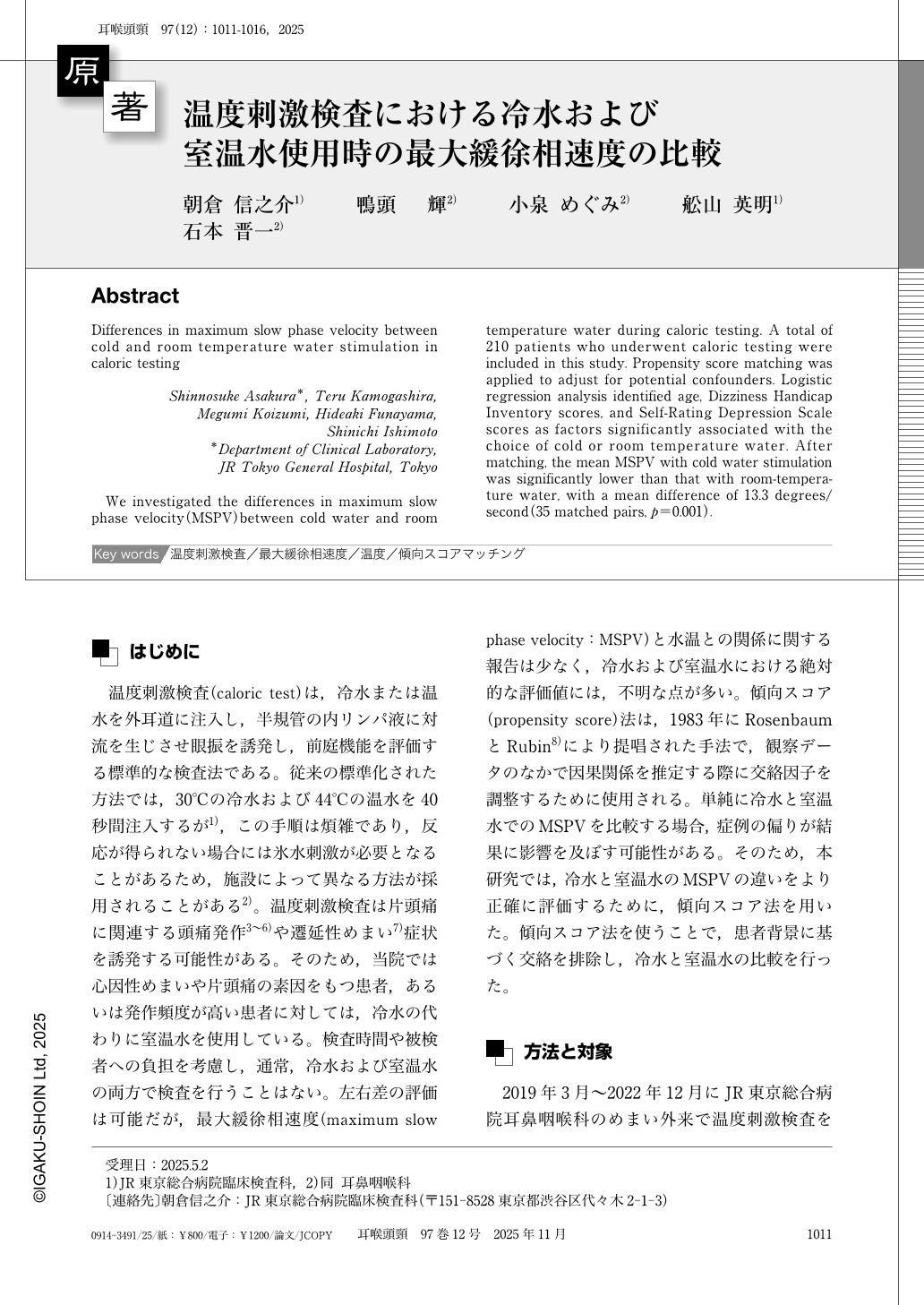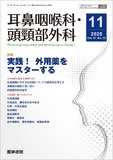Japanese
English
- 有料閲覧
- Abstract 文献概要
- 1ページ目 Look Inside
- 参考文献 Reference
はじめに
温度刺激検査(caloric test)は,冷水または温水を外耳道に注入し,半規管の内リンパ液に対流を生じさせ眼振を誘発し,前庭機能を評価する標準的な検査法である。従来の標準化された方法では,30℃の冷水および44℃の温水を40秒間注入するが1),この手順は煩雑であり,反応が得られない場合には氷水刺激が必要となることがあるため,施設によって異なる方法が採用されることがある2)。温度刺激検査は片頭痛に関連する頭痛発作3〜6)や遷延性めまい7)症状を誘発する可能性がある。そのため,当院では心因性めまいや片頭痛の素因をもつ患者,あるいは発作頻度が高い患者に対しては,冷水の代わりに室温水を使用している。検査時間や被検者への負担を考慮し,通常,冷水および室温水の両方で検査を行うことはない。左右差の評価は可能だが,最大緩徐相速度(maximum slow phase velocity:MSPV)と水温との関係に関する報告は少なく,冷水および室温水における絶対的な評価値には,不明な点が多い。傾向スコア(propensity score)法は,1983年にRosenbaumとRubin8)により提唱された手法で,観察データのなかで因果関係を推定する際に交絡因子を調整するために使用される。単純に冷水と室温水でのMSPVを比較する場合,症例の偏りが結果に影響を及ぼす可能性がある。そのため,本研究では,冷水と室温水のMSPVの違いをより正確に評価するために,傾向スコア法を用いた。傾向スコア法を使うことで,患者背景に基づく交絡を排除し,冷水と室温水の比較を行った。
We investigated the differences in maximum slow phase velocity(MSPV) between cold water and room temperature water during caloric testing. A total of 210 patients who underwent caloric testing were included in this study. Propensity score matching was applied to adjust for potential confounders. Logistic regression analysis identified age, Dizziness Handicap Inventory scores, and Self-Rating Depression Scale scores as factors significantly associated with the choice of cold or room temperature water. After matching, the mean MSPV with cold water stimulation was significantly lower than that with room-temperature water, with a mean difference of 13.3 degrees/second(35 matched pairs, p=0.001).

Copyright © 2025, Igaku-Shoin Ltd. All rights reserved.


